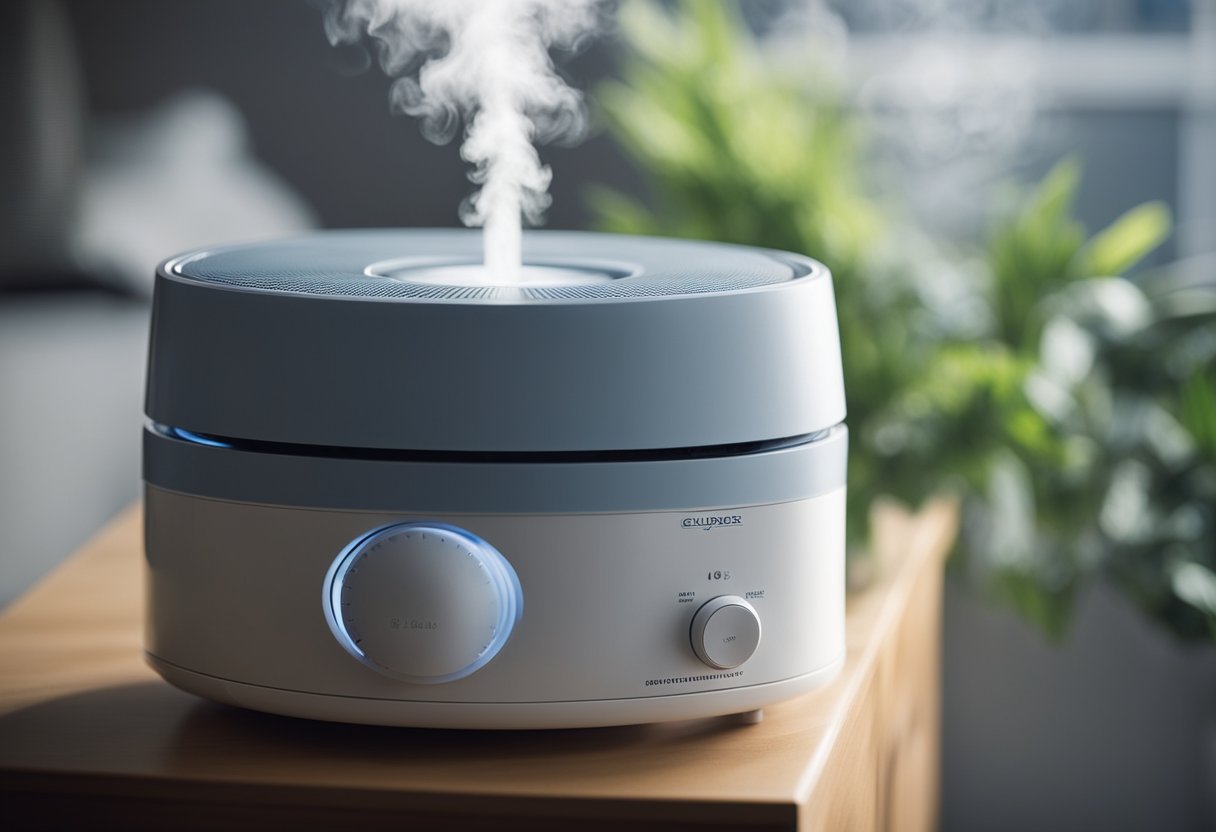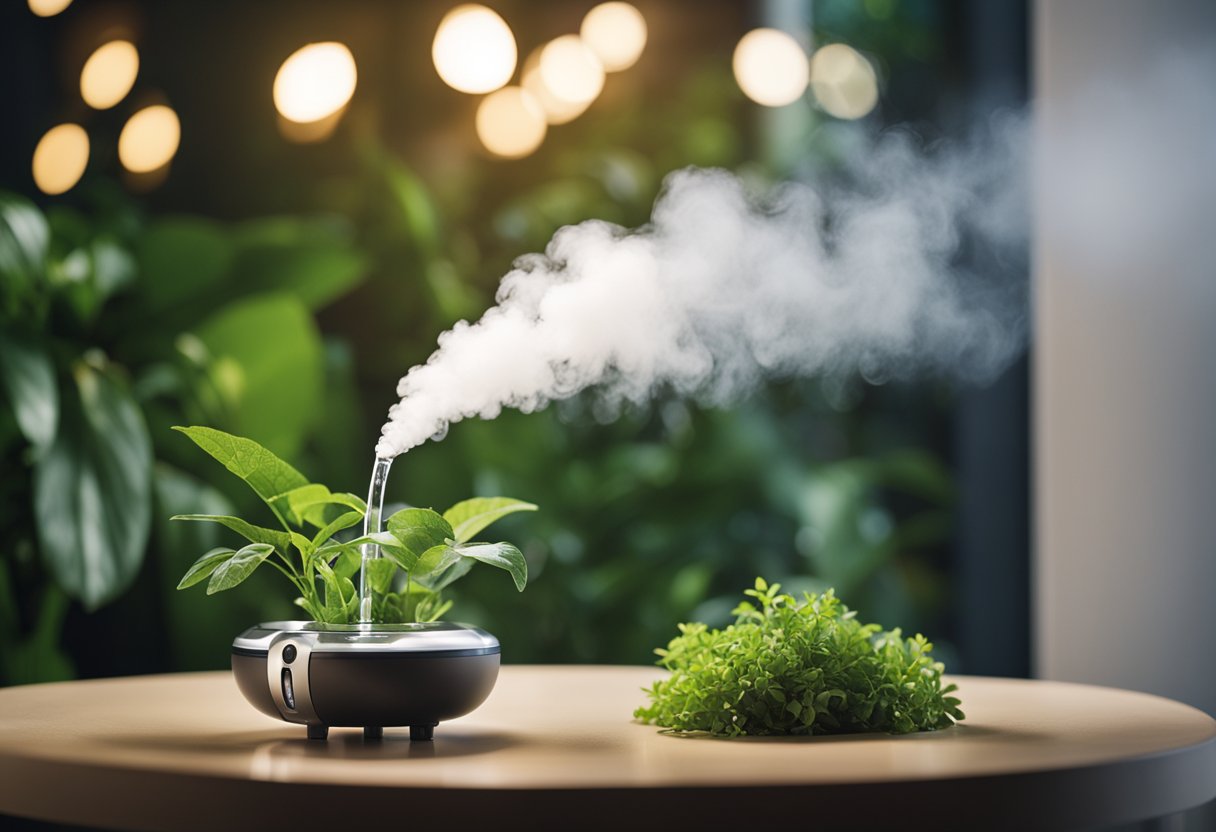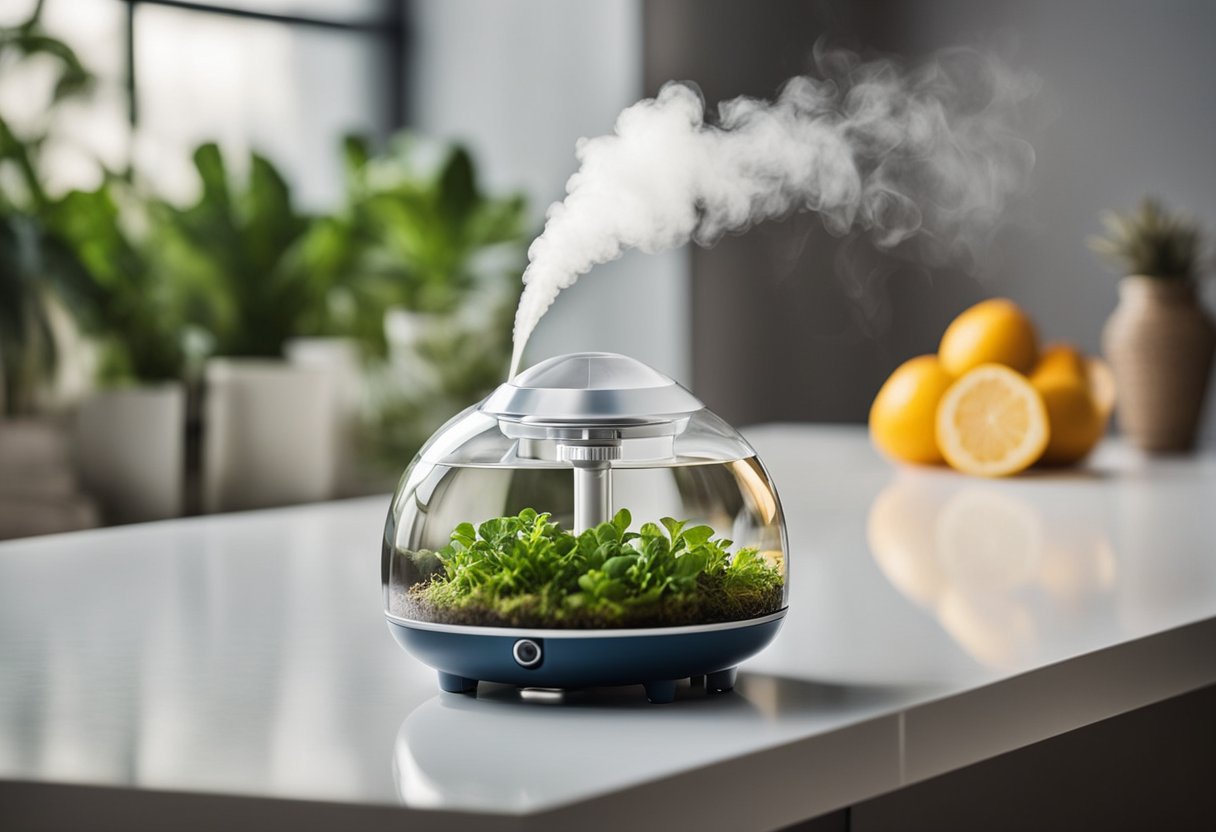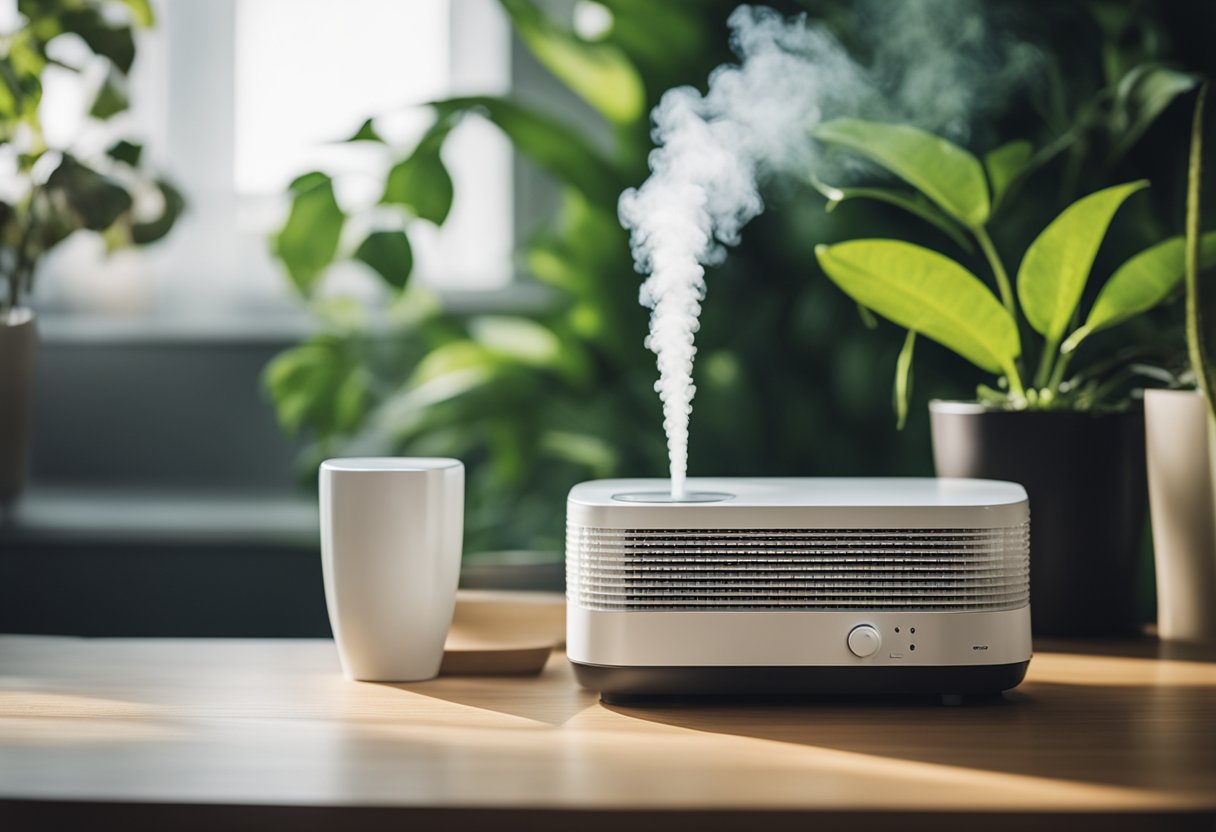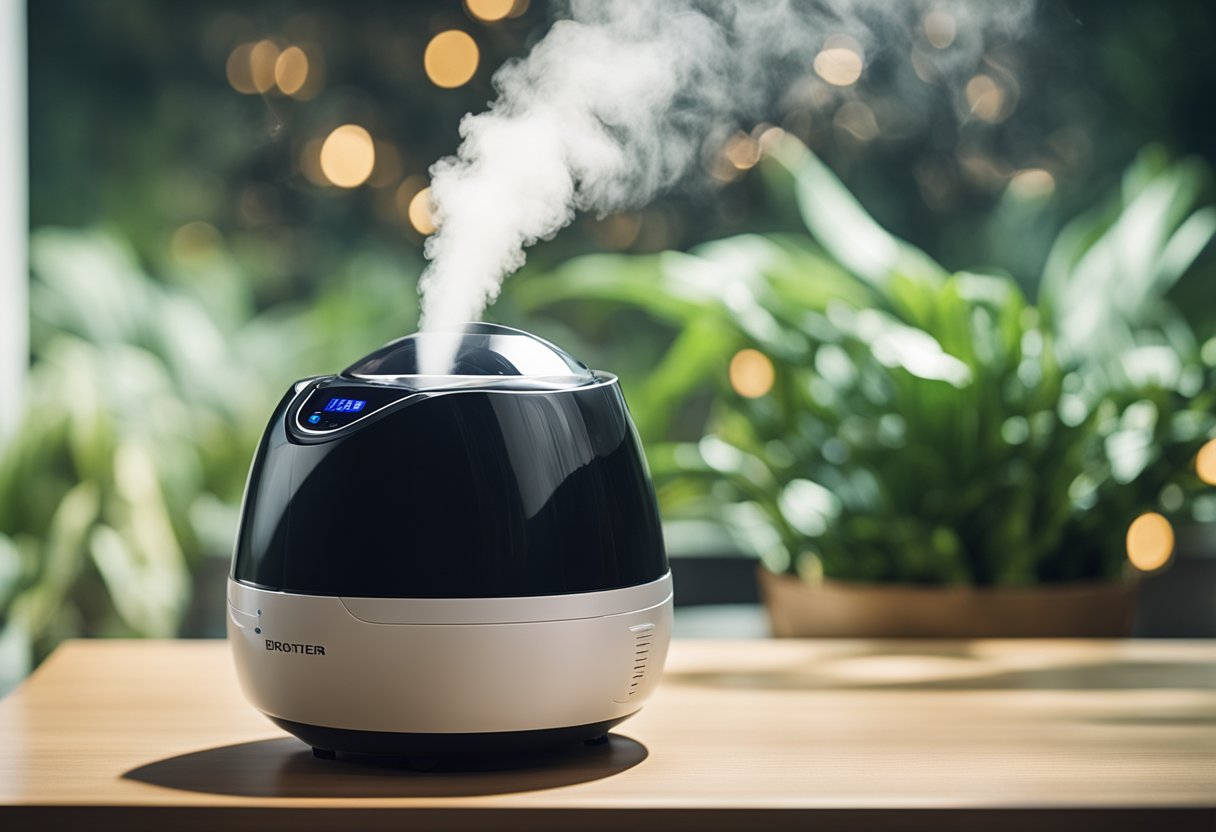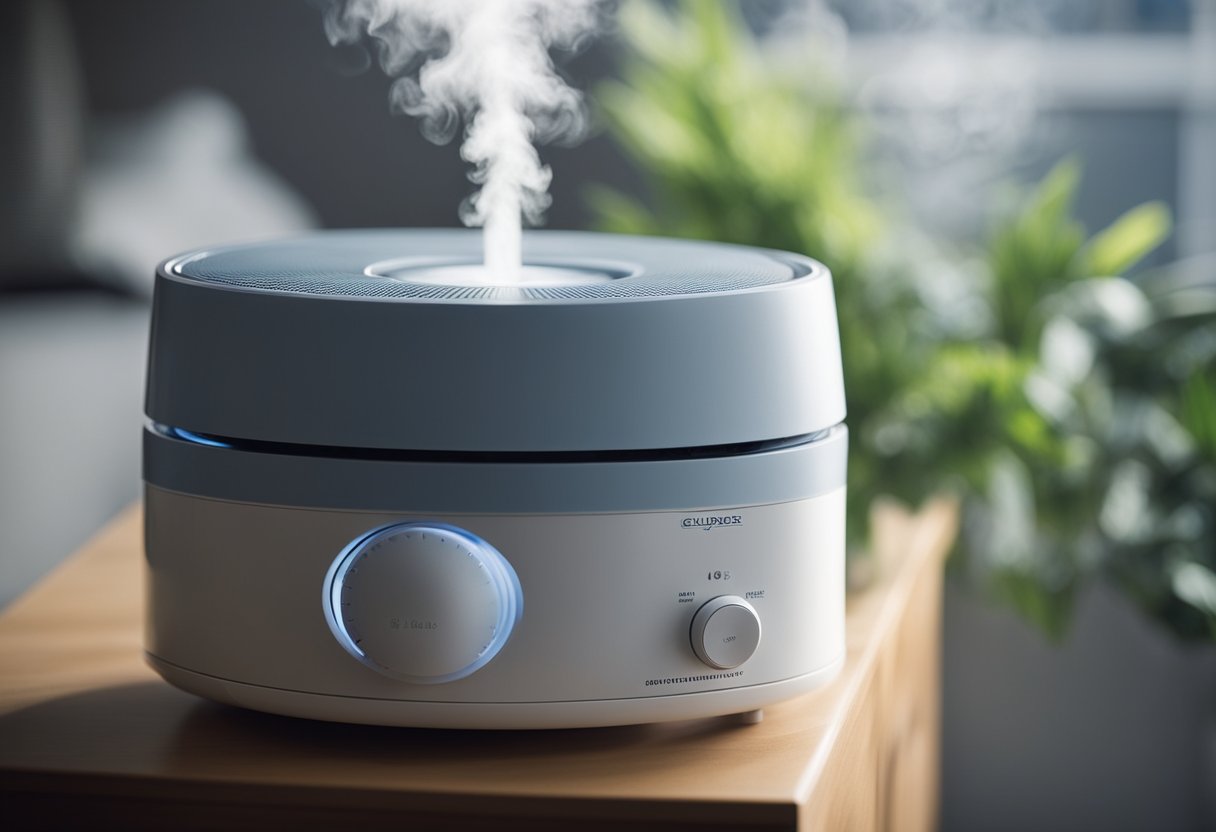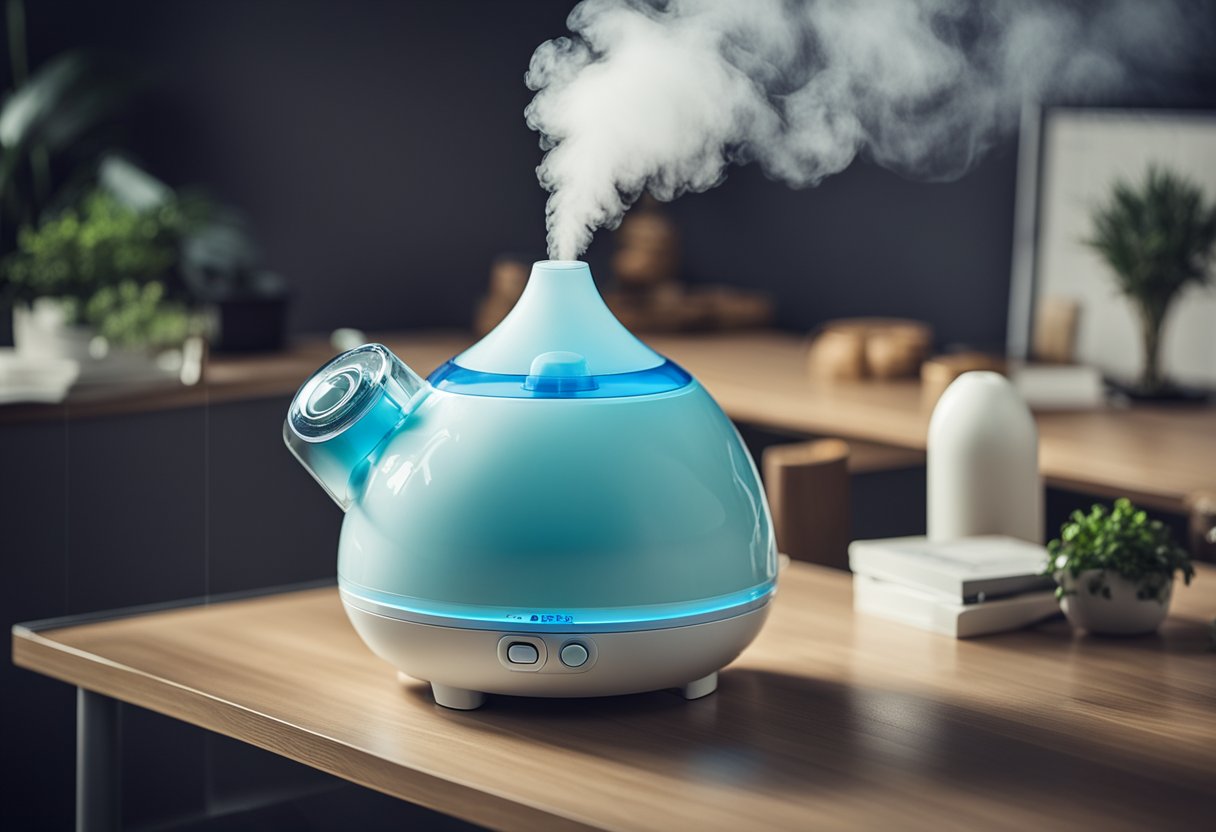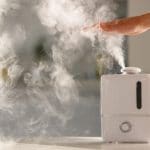Seeking the Best Humidifier? Discover Our Comprehensive Guide
Seeking the perfect humidifier for your home? Look no further as we unveil our ultimate buyer’s guide that will help you make an informed decision. Humidifiers play a vital role in maintaining optimal indoor humidity levels, which not only provide comfort but also alleviate many health issues, such as dry skin, sinus congestion, and allergies. With a wide range of options available in the market, choosing the right one can be overwhelming.
Our comprehensive guide will walk you through the different types of humidifiers, the key features to look for, and how to maintain your humidifier to ensure its longevity and effectiveness. We also touch upon the impact of humidifiers on indoor environments and some safety considerations. Whether you require a small, portable unit or a whole-house solution, our in-depth analysis empowers you to make the best choice for your unique needs.
Key Takeaways
- Understand different types of humidifiers and features to consider
- Learn the importance of proper maintenance for optimal performance
- Consider safety and environmental factors when selecting a humidifier
Understanding Humidifiers
Humidifiers are devices designed to increase the moisture content in the air, helping to maintain optimal humidity levels in indoor environments. They come in various types, including cool mist, warm mist, ultrasonic, evaporative, and whole-house humidifiers. Each type serves a specific purpose and is suitable for different needs and preferences.
Cool-mist humidifiers disperse a cool, fine mist of water into the air, which then evaporates to increase the humidity level. These humidifiers are energy-efficient and can cover large areas. Warm-mist humidifiers, on the other hand, release a warm vapor into the air, which can be comforting during colder months. They are generally quieter than cool-mist humidifiers but may consume more energy.
Ultrasonic humidifiers use high-frequency vibrations to generate a fine mist, making them extremely quiet and efficient. They are available in both cool and warm mist options, catering to different preferences. Evaporative humidifiers, also known as wick humidifiers, employ a fan to blow air through a wet wick or filter to disperse moisture. They are self-regulating, meaning they release less moisture as the air becomes more humid.
Whole-house humidifiers are integrated into a home’s heating and cooling system, enabling them to control humidity levels throughout the entire house. They are ideal for those with central heating systems and can prove cost-effective in the long run.
When choosing a humidifier, it’s essential to consider factors such as room size, noise levels, energy consumption, and ease of maintenance. Some humidifiers require regular cleaning, while others may need filter replacements. Additionally, understanding the appropriate humidity level for your home is crucial, as excessive moisture can lead to mold growth and other issues. The ideal indoor relative humidity is typically between 30% and 50%.
In conclusion, humidifiers are valuable devices for maintaining comfortable and healthy indoor environments. With various types available, such as cool-mist, warm-mist, ultrasonic, evaporative, and whole-house humidifiers, there is an option to suit every preference and need. Consider factors such as room size, energy consumption, and maintenance requirements when selecting the ideal humidifier for your home.
Factors to Consider When Buying a Humidifier
Size and Capacity
When looking for the best humidifier, consider the size and capacity that best suits your needs. The capacity of a humidifier is usually measured based on the amount of water it can hold and the square footage it can cover. Make sure the humidifier you choose can effectively provide adequate humidity for the room size where you plan to use it. Check the product specifications for the maximum square footage or room size and the tank capacity to ensure it will meet your requirements.
Control and Convenience
Modern humidifiers offer various control options that can enhance convenience and ease of use. Some models have digital controls, allowing you to adjust humidity levels more accurately. Some humidifiers also come with remote control, enabling you to control the settings from a distance. Look for features like an automatic shut-off, which turns off the humidifier when the water level is low, and a timer function for scheduling operation times.
Health and Safety Issues
Humidifiers can greatly improve indoor air quality by alleviating allergies, asthma, dry skin, and other health issues associated with dry air. However, it is important to choose a device that minimizes the risk of mold, bacteria, and dust mites. Ultrasonic and evaporative humidifiers prevent the growth of harmful microorganisms in the water reservoirs, which is especially important for people with respiratory problems. Be sure to clean and maintain your humidifier according to the manufacturer’s instructions to ensure it operates safely and efficiently.
Noise and Convenience
The noise level of a humidifier is an important factor to consider, especially if you plan to use it in your bedroom or living room. Ultrasonic humidifiers are often quieter than other types, as they do not use a fan to disperse the mist. Check the decibels of the device before purchasing, as lower decibels generally indicate quieter operation. Additionally, consider the ease of refilling and cleaning the water tank, as this will affect the overall convenience of using the humidifier.
Key Takeaways
When seeking the best humidifier, there are several important factors to consider in order to make an informed decision. Understanding these key points will help you find the perfect humidifier for your needs.
Firstly, determine the type of humidifier that suits your specific requirements. There are various types such as cool mist and warm mist humidifiers, each with their own pros and cons. For example, cool mist humidifiers are safe to use and better for people living with asthma, but may be noisy due to the presence of a fan.
Next, consider the size of the room you need to humidify. This will help you choose a model with the appropriate coverage to effectively increase the humidity level in the space. Many popular humidifiers, like Everlasting Comfort Humidifiers and Pure Enrichment MistAire Ultrasonic Cool Mist Humidifier, provide information on the recommended room size they can accommodate.
Furthermore, usability matters when selecting a humidifier. Some modern humidifiers come with advanced features such as smart controls and timers, which can help maintain the optimal humidity level in your room without constant adjustments. The Levoit OasisMist 450S Smart Humidifier is a great example of a device offering these convenient features.
Finally, always prioritize maintenance and cleaning ease. To ensure your humidifier’s optimal performance and lifespan, choose a device that is easy to clean and refill. This includes considering a model with a removable water tank or one that has an easy-to-clean filter.
By keeping these key takeaways in mind, you are well on your way to finding the ideal humidifier for your home.
Types of Humidifiers
There are several types of humidifiers available in the market, catering to various needs and preferences. The main categories include cool mist and warm mist humidifiers, each with its own unique features and technologies.
Cool mist humidifiers can be further classified into three subtypes – evaporative, ultrasonic, and impeller. Evaporative models use a fan to blow air through a wet wick, cooling the air as it picks up moisture. These humidifiers are energy-efficient and suitable for larger spaces. Ultrasonic humidifiers, on the other hand, use high-frequency sound vibrations to generate a fine mist. They are quiet, energy-efficient, and ideal for bedroom use. Lastly, impeller humidifiers use a rotating disc to create a cool mist, and although they are less common, they are affordable and efficient in smaller rooms.
Warm mist humidifiers, also known as vaporizers, boil water to create a warm vapor that is dispersed into the air. They are best for alleviating symptoms of cold and flu due to the higher temperature of the released mist. Since warm mist humidifiers do not require a fan, they are quieter than their cool mist counterparts. However, they may consume more energy and pose a potential hazard due to the boiling water.
In addition to the above classifications, some humidifiers combine both cool and warm mist functionalities, offering versatility to users. When selecting a humidifier, take into account factors such as room size, noise level, energy consumption, and ease of cleaning. It is crucial to keep the humidifier clean to prevent the growth of bacteria and mold. One of the best humidifiers of 2023 includes the Canopy humidifier, which features a larger 5.5L tank and an easy-to-clean design. Considering the various types of humidifiers and their features can help you find the right one to maintain a comfortable and healthy environment in your home.
Key Features to Consider
When looking for the best humidifier, there are several important features to consider. These features can greatly impact the efficiency, maintenance requirements, and overall performance of a humidifier.
Room Size Compatibility: Different humidifiers have different capacities to humidify a specific room size. Be sure to choose a humidifier that can effectively cover the space you intend to use it in. For example, the Lasko UH300 is suitable for rooms up to 600 square feet.
Type of Humidifier: Humidifiers generally come in four types: evaporative, ultrasonic, impeller, and steam vaporizer. Each of them has its pros and cons. For instance, ultrasonic humidifiers like the Honeywell Designer Series Cool Mist Humidifier are known for being quiet and energy-efficient.
Ease of Maintenance: A humidifier that is easy to clean and maintain should be a top priority. Some models have filterless designs, making them easier to maintain, such as the TaoTronics Space-Saving Filterless Humidifier.
Noise Level: For bedrooms and living areas, a quiet humidifier is essential. The noise generated by some models can be disturbing, so choose one that operates quietly. Ultrasonic and evaporative humidifiers, such as the Levoit Classic 300S and Vornado EVDC300, are generally known for having low noise levels.
Additional Features: Extra features like built-in hygrometers, timers, and remote controls can improve your humidifier experience. Look for features that you find essential or useful in order to pick the best fit for you.
Keep these key features in mind when searching for the perfect humidifier to enhance the comfort and air quality in your home.
How to Maintain Your Humidifier
Maintaining your humidifier is essential for ensuring its optimal performance and longevity. Regular cleaning and proper usage can help prevent mineral buildup, bacteria growth, and unpleasant odors. In this section, we will discuss simple steps for keeping your humidifier in top-notch condition.
First and foremost, it is crucial to clean your humidifier regularly. Depending on the manufacturer’s recommendation and the frequency of usage, cleaning could be required weekly or biweekly. Cleaning typically involves disassembling the unit, rinsing the water tank and parts with clean water, and wiping down surfaces with a soft cloth. Some models may require a vinegar solution for more thorough cleaning, followed by a thorough rinse. A gentle approach to cleaning ensures that no damage is caused to delicate components. For more detailed instructions on cleaning your specific humidifier model, consult the user manual or visit Healthline.
Replacing the filter is another essential aspect of maintaining your humidifier. Wick filters, for example, are responsible for absorbing water and releasing moisture into the air. Over time, they can become saturated with minerals, mold, and bacteria, which reduces their efficiency. Check the manufacturer’s recommendations for filter replacement intervals and always use genuine, compatible filters for the best results.
Hard water is a common concern for many users, as it can lead to an increased buildup of minerals within the humidifier. To combat this issue, you may choose to use distilled water instead of tap water in your device. Distilled water has a significantly lower mineral content, decreasing the likelihood of mineral accumulation and extending the life of your unit.
In summary, maintaining a humidifier involves regular cleaning, timely filter replacements, and using the appropriate water type. By following these guidelines, you can enjoy the benefits of a well-functioning humidifier and create a comfortable living environment.
Maintenance Tips
Regular maintenance is essential to keep your humidifier functioning optimally and ensure healthy indoor air quality. Here are some helpful tips to maintain your humidifier:
Clean the water tank regularly: It’s crucial to clean and disinfect the water tank to avoid the growth of mold, bacteria, and other harmful microorganisms. Empty the water, clean the tank with a mild detergent, and rinse thoroughly with water before refilling the tank. This should be done at least once a week or more frequently, depending on the manufacturer’s recommendations.
Replace filters as needed: Some humidifiers come with filters that need to be replaced regularly. Check the owner’s manual to determine the recommended replacement schedule for your specific model. Keep in mind that in areas with hard water, the filters may need to be changed more often.
Clean the humidifying element: Ultrasonic and steam humidifiers have a humidifying element that needs to be cleaned to ensure proper operation. Follow the manufacturer’s guidelines on how to clean this component. This may include soaking the element in a vinegar solution or using a soft brush to remove mineral deposits.
Monitor humidity levels: Excess humidity in the air can lead to mold growth and other issues. To avoid these problems, use a hygrometer to measure indoor humidity levels, and aim to maintain a level between 30 to 50 percent [9 Tips for Humidifier Use and Maintenance – The Spruce]. Adjust your humidifier settings accordingly to keep the moisture levels within this range.
Dry the unit before storage: When not in use, disconnect the humidifier from the power source, empty the water tank, and allow all parts to dry completely before storing. This prevents mold and bacterial growth during storage and ensures your humidifier is ready to use when needed.
Effect of Humidifiers on Indoor Environments
Humidifiers play a crucial role in maintaining a comfortable and healthy living environment. They help regulate the indoor relative humidity in our homes, which is an essential factor for both our well-being and the preservation of our belongings.
Low humidity levels can lead to several issues, such as causing dry skin, respiratory problems, and even increased susceptibility to illness. When the indoor humidity is balanced, it contributes to improved air quality and a healthier living environment. This is particularly important during the winter months when the combination of cold weather and heating systems can cause a significant drop in the air’s moisture content.
On the flip side, maintaining an ideal humidity level in your home can help preserve your wood furniture and other delicate items, preventing them from drying out and warping. This is especially true for musical instruments, paintings, and antiques that require a specific range of humidity for optimal preservation.
In addition to human health and preserving belongings, maintaining proper humidity levels can also positively impact the overall indoor air quality. It helps decrease the presence of dust, allergens, mold, and bacteria, contributing to a cleaner and more comfortable environment. Having balanced humidity also reduces the likelihood of static electricity build-up, which can be a nuisance and even potentially harmful to electronic devices.
To achieve the ideal humidity level in your home, it’s essential to select the right type of humidifier and place it strategically. There’s a wide array of choices, including evaporative, ultrasonic, and impeller humidifiers, each offering different benefits and drawbacks. It’s essential to take into consideration factors such as room size, humidity requirements, and specific needs when selecting the best humidifier for your living space.
In conclusion, investing in a suitable humidifier can greatly improve the atmosphere in your home by providing optimal humidity levels, enhancing indoor air quality, promoting health, and safeguarding your valuable items.
Safety Considerations
When selecting the best humidifier for your needs, it’s important to keep safety in mind, especially if you have children, pets, or live with individuals with respiratory sensitivities. Here are some key safety considerations to take into account when choosing a humidifier.
First, consider the type of humidifier you’re purchasing. Cool mist humidifiers, such as ultrasonic, evaporative, and impeller, emit room-temperature mist into the air, making them safer for children and pets, as there’s no risk of accidental burns. However, these devices might emit a small amount of white dust, which could potentially be a concern for people with allergies.
In contrast, warm mist humidifiers, which heat the water before releasing it into the air, pose a risk of burns and fire hazards. They can also accumulate mineral deposits in the heating chamber, which require regular cleaning to avoid bacteria growth.
Another important aspect is to choose a humidifier with an auto-shutoff feature. This function ensures that the device turns off automatically when the water reservoir is empty, helping to prevent overheating and potential fires.
Regular maintenance and cleaning of the humidifier are crucial to ensure the unit operates safely and effectively. Make sure to follow the manufacturer’s guidelines on cleaning and maintenance. This will help minimize the risk of mold and bacteria growing in the unit, which can lead to poor indoor air quality and potential health issues.
Finally, when using a humidifier, it’s essential to monitor the room’s humidity levels. Over-humidification may lead to mold growth and other health risks. Ideally, aim to maintain a humidity level between 30% and 50%, which can be measured with a simple and affordable hygrometer.
By keeping these safety considerations in mind, you can confidently choose the right humidifier to meet your needs and create a comfortable, healthy indoor environment.
Special Features in Humidifiers
Humidifiers come with a wide range of special features to enhance their performance and user experience. One essential feature to look for is a built-in humidistat. A humidistat allows you to set a desired humidity level, and the device will automatically maintain it by adjusting its mist output. This feature ensures that your space does not get excessively humid, which could lead to mold growth or other issues.
Some humidifiers also include a diffuser that allows you to use essential oils along with the mist output. This feature is great for those who enjoy aromatherapy or want to create a pleasant, soothing atmosphere in their home. If a diffuser is essential for you, make sure the humidifier is compatible with essential oils, as not all models are designed to handle them.
Mist settings and speed settings are also crucial factors in finding the perfect humidifier. These options give you more control over the humidity output and can help you adjust the device for various room sizes or personal preferences. A hygrometer is another valuable feature to look for, as it measures the humidity level in the room, helping you ensure the optimal level is maintained.
In terms of design, some humidifiers come with an LED light that can serve as a peaceful night light or as an indicator to show the device is functioning. If portability is vital for you, a lightweight design would be preferable, as it allows for easy relocation and maneuverability. A 360-degree nozzle is an excellent feature for even distribution of mist, enabling the humidifier to cover the entire space more effectively.
In conclusion, when seeking the best humidifier, it’s essential to consider these special features. They can help you find the perfect humidifier to meet your unique needs, optimize performance, and enhance your overall experience. Always remember to select a model designed specifically for the features you value most, and enjoy the enhanced benefits it brings to your home.
Pros and Cons
When choosing the best humidifier for your needs, it’s essential to understand the different types and their respective pros and cons. There are three main types of cool mist humidifiers: ultrasonic, evaporative, and impeller. Each has its advantages and drawbacks, which can significantly influence your decision.
Ultrasonic humidifiers are known for their quiet operation and energy efficiency. They use high-frequency vibrations to create a fine mist, which is then released into the air. This type is ideal for those who prioritize noise reduction during operation and are seeking lower energy consumption rates. However, they may produce a white dust due to minerals in the water. Additionally, their cost can be higher compared to other models, so keep your budget in mind when considering this option.
Evaporative humidifiers work by blowing air through a wet wick filter, which then releases moisture into the room. These units are generally more affordable and can provide consistent humidity levels. Furthermore, their filters can help reduce the spread of bacteria and mold. On the downside, evaporative humidifiers tend to be noisier, require regular filter replacements, and may not work as effectively in larger spaces.
Impeller humidifiers utilize a spinning disc to disperse water into the room in the form of tiny droplets. Like ultrasonic models, impeller humidifiers operate quietly and consume less energy. They are also more budget-friendly. However, they share the same white dust issue as ultrasonic models and often have lower output capacities. This may make them less suitable for larger rooms or spaces with particularly dry air.
When considering the best humidifiers, it’s essential to weigh the pros and cons of each type to determine which one best fits your specific needs, preferences, and budget. Factors like room size, noise tolerance, maintenance requirements, and energy efficiency should all be taken into account as you make your decision.
Environmental Impact
When choosing the best humidifier for your needs, it’s essential to consider the environmental impact of your decision. Opting for a model that is energy-efficient and eco-friendly can help reduce your carbon footprint and contribute positively to the environment.
One option to consider is the Vornado EVDC300, which is designed for medium-sized spaces and uses 90% less energy compared to traditional humidifiers. This energy-efficient model comes with auto-humidity control and water-level sensing features, making it a smart choice for the environmentally conscious consumer.
In addition to energy efficiency, it’s also important to consider the materials and manufacturing processes used in producing the humidifier. Look for models made from recycled or sustainable materials to further minimize the impact on the environment. This can not only help reduce waste but also contribute to a healthier indoor air quality for your home.
The maintenance and upkeep of your humidifier are also crucial factors in its environmental impact. Choose a humidifier with easy-to-clean components and replaceable filters, as this will ensure that your device remains in optimal working condition without contributing to unnecessary waste. Regular cleaning and maintenance can help prolong the life of your humidifier while maintaining its efficiency.
By taking these considerations into account when selecting your humidifier, you can make a more environmentally friendly choice and contribute to a healthier, greener planet.
Why Humidifiers Matter
Humidifiers play a crucial role in maintaining a comfortable living environment, especially during seasons when the air tends to be dry. They work by adding moisture to the air, which helps in various ways.
Firstly, humidifiers can alleviate health issues caused by low humidity levels, such as dry skin, itchy eyes, congestion, and allergy symptoms. By increasing the indoor humidity, they help ensure that mucous membranes and skin retain their natural moisture, preventing dryness and irritation.
Secondly, a well-maintained humidity level can preserve the longevity and appearance of wooden furniture, flooring, and musical instruments. Dry air can cause wood to shrink, warp, and crack, so adding moisture to the air with a humidifier helps protect these valuable items.
Lastly, humidifiers can contribute to energy efficiency in the home. When the air is properly hydrated, it feels warmer, which may allow for reduced heating during the winter months. This can result in lowered energy consumption and utility bills.
Selecting the right humidifier is essential to achieve these benefits. One should consider factors such as room size, type of humidifier (ultrasonic, evaporative, impeller), and additional features like timers, automatic shut-off, and filters. Exploring best humidifier reviews and buying guides can help make an informed decision.
Top Humidifiers in Market
In the search for a suitable humidifier that meets your needs, we have compiled the top picks available in the market. To help you make an informed decision, we will discuss their performance and provide insights on installation and warranty.
Product Review and Performance
One popular option worth considering is the Levoit LV600HH Hybrid Ultrasonic Humidifier, known for its efficiency in large rooms. It offers both warm and cool mist options, giving users flexibility to adjust the humidity levels according to their preferences.
For a versatile all-in-one solution, the Dyson Pure Humidify + Cool features a purifier, humidifier, and fan in a single sleek design. Its performance in testing showed a consistent mist output, effectively improving indoor air quality and comfort levels.
For a more comprehensive approach, whole-house humidifiers can be integrated into your HVAC system, like the Essick MA1201. These units maintain consistent humidity levels throughout your entire home, providing a more energy-efficient solution compared to portable models.
Installation and Warranty
Before purchasing a humidifier, it is crucial to consider its installation requirements. Portable models, such as Levoit and Dyson, generally have user-friendly setups. They typically involve placing the unit in a desired location, filling the water reservoir, and plugging it into a power source.
On the other hand, whole-house humidifiers like the Essick MA1201 require more complex installations, as they need to be connected to your HVAC system. It is recommended to consult with a professional HVAC technician for proper installation, ensuring optimal performance and avoiding complications.
Warranty is another essential factor when choosing a humidifier. Top picks like the Levoit LV600HH and Dyson Pure Humidify + Cool often come with manufacturer’s warranties to provide customers assurance and support. However, warranty periods and coverage may vary among different models and brands, so make sure to review the terms and conditions before making a purchase.
Frequently Asked Questions
What are the top humidifier brands in 2023?
The top humidifier brands in 2023 include Honeywell, TaoTronics, Canopy, and Lasko. With a variety of options, these companies offer high-quality performance and efficient humidity control for various needs.
Which humidifier is best for large rooms?
The Lasko UH300 is highly recommended for large rooms as it can humidify up to 600 square feet of space. With a very good rating in output test, this ultrasonic humidifier provides optimal results for larger areas.
How do I choose a humidifier for my baby’s room?
When choosing a humidifier for a baby’s room, consider factors like humidity output, noise level, and safety features. An option like the Everlasting Comfort Cool Mist Humidifier offers quiet operation and adjustable mist settings for a comfortable environment to support your baby’s wellbeing.
What are the key benefits of using a humidifier?
Using a humidifier promotes healthier air quality while providing relief from dryness, congestion, and allergies. A humidifier can also reduce static electricity, protect wooden furniture, and alleviate dry skin, eyes, and throat issues during the winter months.
Should I get a combination air purifier and humidifier?
A combination air purifier and humidifier can be beneficial for those looking to improve overall air quality and maintain healthy humidity levels. While specific needs vary, these devices can enhance the living environment by removing airborne pollutants alongside efficient humidification.
What is the healthiest type of humidifier to use?
The healthiest type of humidifier depends on individual preferences and requirements. However, evaporative and ultrasonic humidifiers are generally preferred due to their nearly silent operation and lower risk of harboring mold or bacteria. It is crucial to clean and maintain your humidifier regularly to ensure optimal performance and hygiene.
Conclusion
When seeking the best humidifier, it’s important to consider several factors to ensure you make the right choice for your needs. These factors include moisture output, moisture level, expert recommendations, types of humidifiers, run time, water tank capacity, and coverage area.
A buying guide can be instrumental in helping you understand the various features and specifications to look for in a humidifier. Moisture output and moisture levels are crucial aspects that contribute to the effectiveness and efficiency of a humidifier. Consult with experts or refer to recommendations in articles, such as The 5 Best Humidifiers of 2023 | Reviews by Wirecutter, to find a suitable model.
Different types of humidifiers cater to specific needs, environments, and preferences. For example, ultrasonic humidifiers are typically quieter, while evaporative humidifiers may be more energy-efficient. Considering the available options, match the humidifier type to your personal requirements.
Run time is an essential factor, as it determines how long the humidifier can operate before needing a refill. Look for models with longer run times, especially if continuous overnight use is desired. Be mindful of water tanks; larger tanks usually allow for extended run times and reduced maintenance frequency.
Finally, coverage plays a significant role in the overall performance of a humidifier. Select a model with the appropriate coverage area to effectively maintain appropriate humidity levels in your space. By paying attention to these factors and utilizing available resources, you will be well-equipped to find the best humidifier for your needs.

